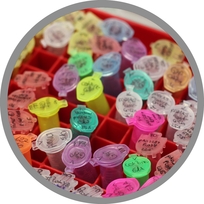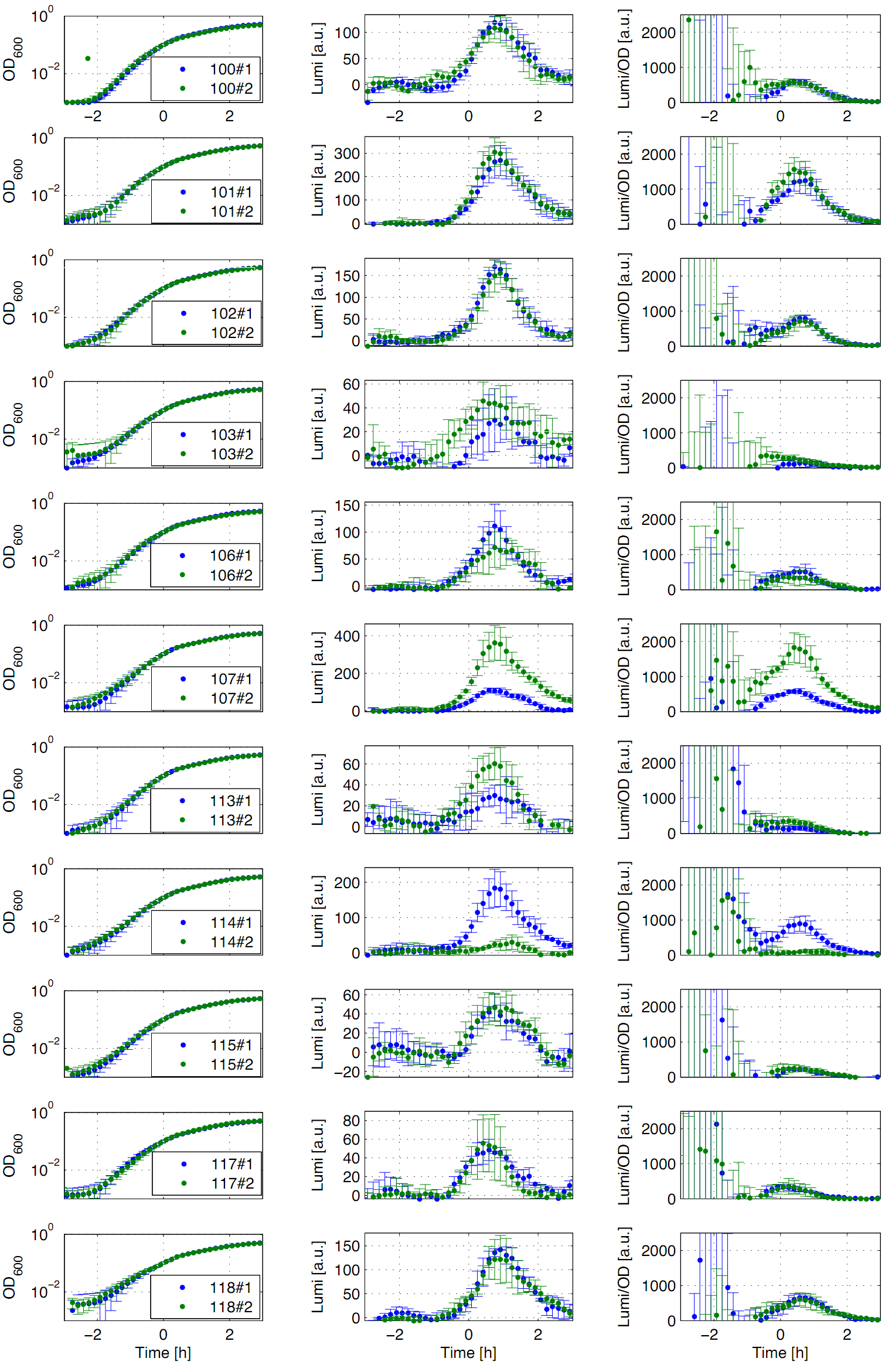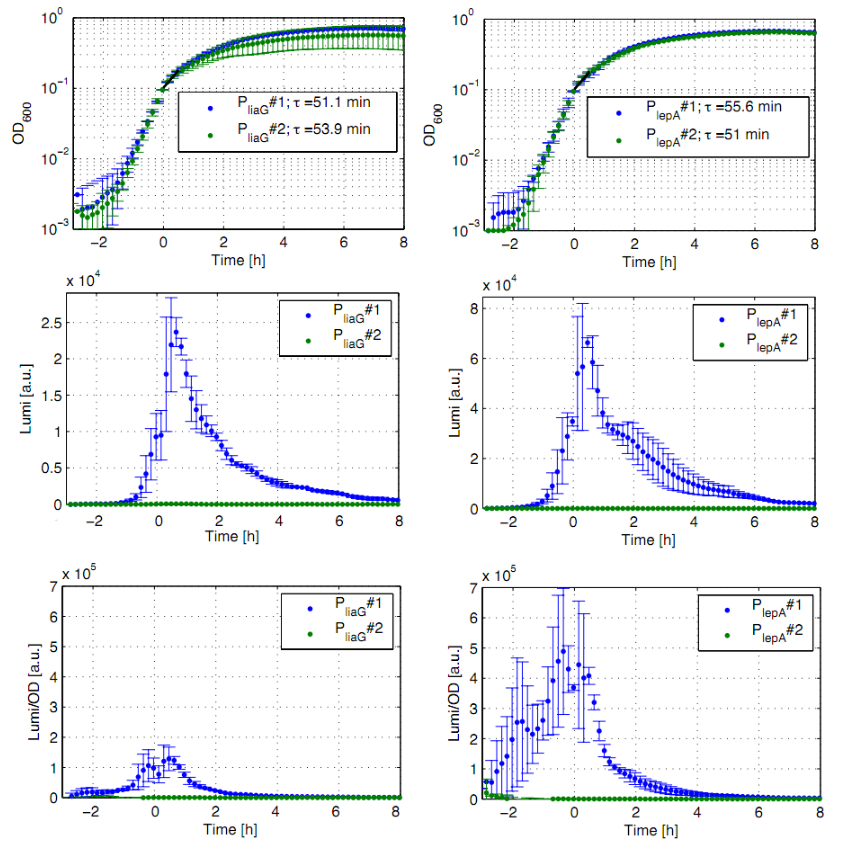Team:LMU-Munich/Data/Anderson
From 2012.igem.org
| Line 14: | Line 14: | ||
<br> | <br> | ||
<br> | <br> | ||
| - | [[File:Auswertung_plate_reader_andere_promotoren.png|thumb| | + | [[File:Auswertung_plate_reader_andere_promotoren.png|thumb|center|400px|'''Fig. 3: Luminescence measurement of the constitutive ''Bacillus'' promoters P<sub>''liaG''</sub> and P<sub>''lepA''</sub> in the reporter vector pSB<sub>''Bs''</sub>3C-''luxABCDE'''. OD<sub>600</sub> (up), LUMI (center) and LUMI per OD<sub>''600''</sub> (down) depending on the time (h) are shown for two different clones (green/blue). Data come from three independent experiments. Curves were fitted over each other (t=0, OD<sub>''600''</sub>=0,3) and smoothed by taking average of three neighboring values.]] |
Revision as of 18:14, 19 September 2012

The LMU-Munich team is exuberantly happy about the great success at the World Championship Jamboree in Boston. Our project Beadzillus finished 4th and won the prize for the "Best Wiki" (with Slovenia) and "Best New Application Project".
[ more news ]

Anderson Promoters

Eleven of the nineteen promoters of the [http://partsregistry.org/Part:BBa_J23100 Anderson collection] (J23100,J23101, J23102, J23103, J23106, J23107, J23113, J23114, J23115, J23117, J23118) were evaluated in the reporter vector pSBBs3C-luxABCDE from the BioBrickBox containing the lux operon as a reporter for promoter activity. The gene expression which correlates to the promoter activity leads to the expression of the lux operon with the luciferase. The luminescence which is produced by the luciferase can be measured with the plate reader (BioTek). Data derive from three undependant measurements (Fig. 1). Curves were fitted over each other (t=0, OD600=0,3) and smoothed by taking average of three neighboring values. OD600 values shown are plate reader units and about one third of the usual OD600 values. All clones show a usual growth curves. The activity of the promoters raises during the pass from the transition to the stationary phase. This maximum (t=1h) reaches from 200Lumi/OD600 (promoter J23115) to a maximum of 1500 Lumi/OD600 for the strongest promoter (J23101). Afterwards the activity goes down to the beginning level (t=2h). The oscillation of luminescence (Lumi/ OD600 in the beginning of the curves are due to the small OD600 and do not mean a high promoter activity. The luminescence of one clone of the promoters J23107 and J23114 do not show activity where in future a second clone with promoter activity should be measured. In comparison to all the other evaluated Bacillus promoters these Anderson promoters showed a very low acitivity in B. subtilis.
To measure the activity not only with the lux reporter operon, four promoters of the Anderson collection were cloned into the reporter vector pSBBs1C-lacZ to do β galactosidase assays and then to compare the results of the strength of these promoters in B. subtilis. (Fig. 2)

 "
"



